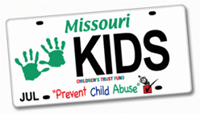The safest place for an infant to sleep is in a standard crib, on his or her back without soft bedding or toys of any kind.
Safe Crib-Safe Sleep is one of CTF’s primary public education campaigns. It provides safe sleep information to parents and encourages them to provide a safe sleeping environment for their infants. The Safe Crib Project Guide outlines a plan for social service agencies, community health agencies, hospitals and other similar organizations to implement a program that will provide safe, new cribs to families in need along with critical parent education about safe sleep arrangements for infants.
A large majority of sudden infant deaths diagnosed as SIDS are due to unsafe sleeping arrangements. These unsafe arrangements include any sleep surface not designed for infants, sleeping with head or face covered, and sharing a sleep surface.
The American Academy of Pediatrics (AAP), the Consumer Product Safety Commission (CPSC) and the National Institute of Child Health and Human Development support the following recommendations on safe bedding practices when putting infants under 12 months down to sleep.
Six Simple Steps to Make Your Baby’s Crib Safe
- Place baby on his/her back on a firm tight-fitting mattress in a crib that meets current safety standards.
- Remove pillows, quilts, comforters, sheepskins, stuffed toys and other soft products from the crib.
- Consider using a sleeper or other sleep clothing as an alternative to blankets, with no other covering.
- If using a blanket, put baby with feet at the foot of the crib. Tuck a thin blanket around the crib mattress, reaching only so far as the baby’s chest.
- Make sure your baby’s head remains uncovered during sleep.
- Do not place baby on a waterbed, sofa, soft mattress, pillow or other soft surface to sleep.
Related Information:
SIDS Resources, Inc.




